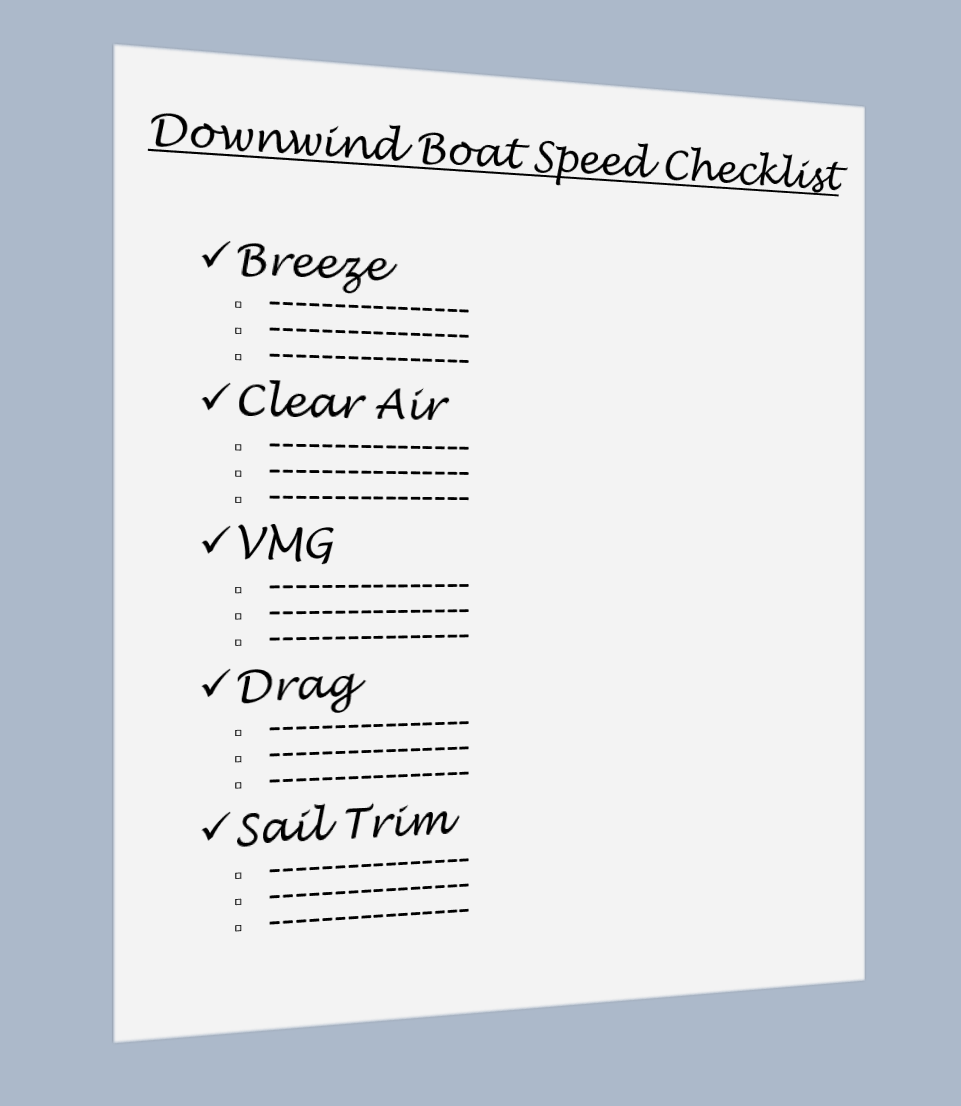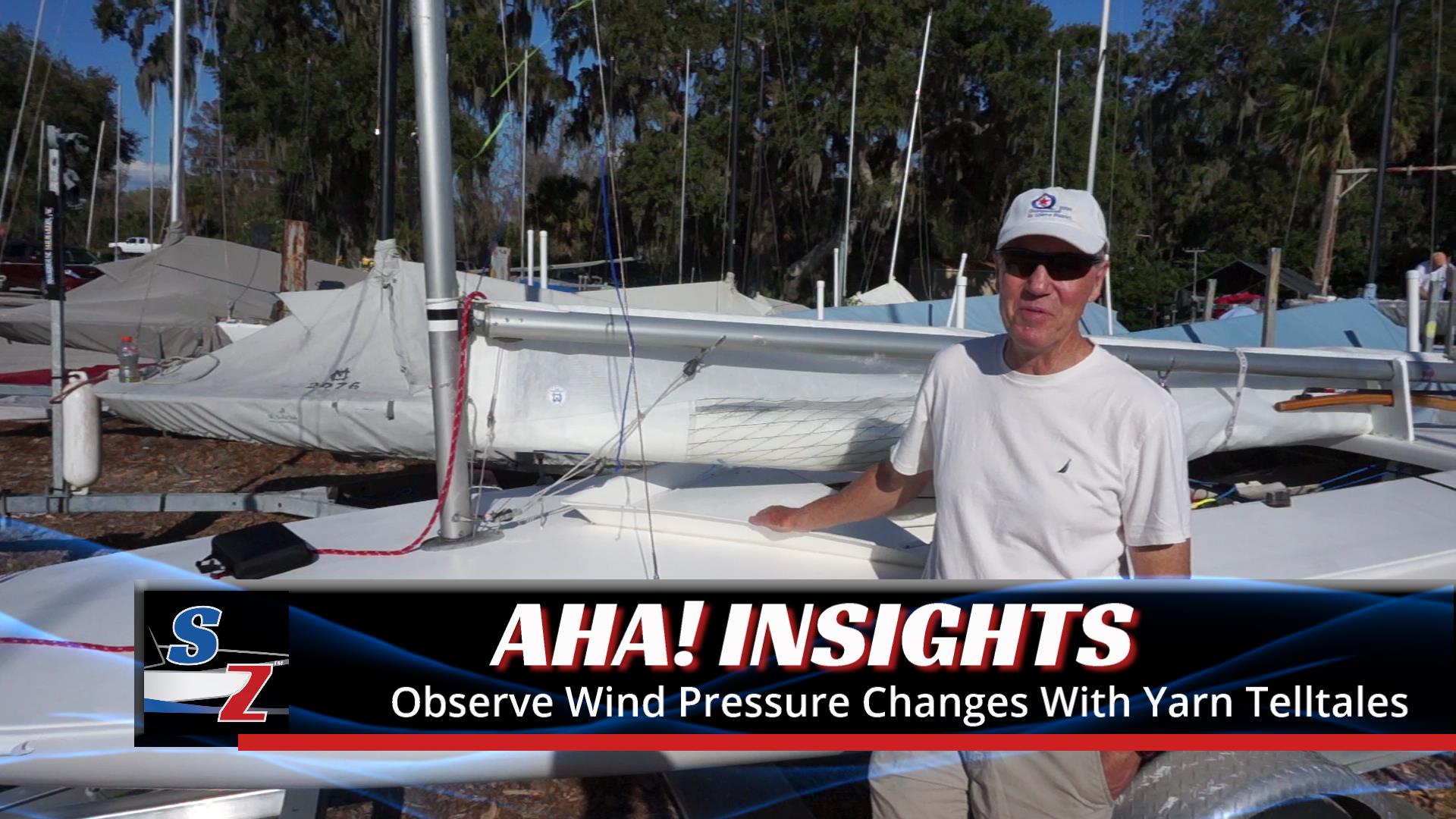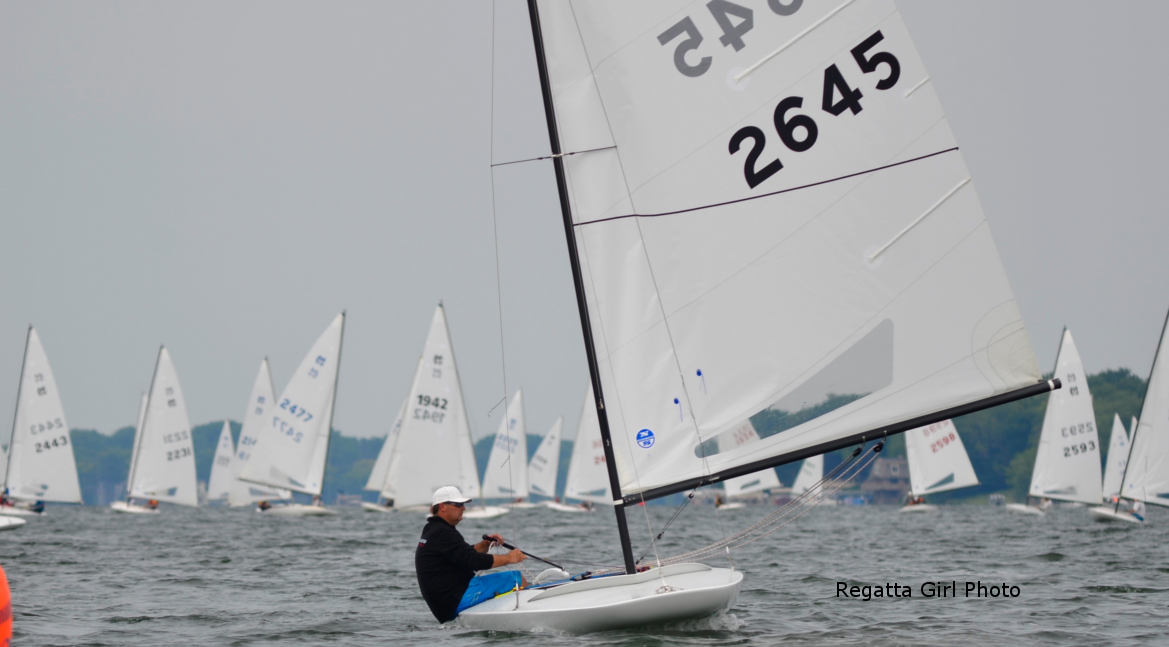Are you working hard enough on downwind boat speed? It’s easy to lose focus, even though downwind sailing requires at least as much concentration as upwind sailing. For this post, we decided to compile a big picture list of things to consider as you try to avoid the slows. You can see the details of some of these factors in the links.
This post has been updated from the original, with additional tips and links.
Downwind Boat Speed Checklist
#1. Stay in Breeze
This is the most important key to downwind boat speed. In Sail Faster Downwind: In Pressure and By the Lee, we learned that puffs are 3-4 times more “powerful” and last 4-5 times longer downwind than upwind. So, unless it’s blowing hard, your first priority is get in the puffs as soon as possible and stay in them.
- As you round the windward mark, look upwind for the first puff and position yourself to get in it.
- Force yourself to constantly look behind you at the wind on the water and other boats to help you connect the dots.
- When a puff hits, bear off or gybe to stay in it longer.
#2. Find Clear Air
You can easily get passed if another boat takes your wind. On the downwind leg, a boat within 5-10 boat lengths may be taking your air. Parades of boats behind you are even worse. Clear air depends on the apparent wind, so use your telltales or masthead fly to check.
- Sight along your telltales or masthead fly back toward the other boat(s).
- If the telltales or fly point to the boat(s) behind, you’re in trouble.
- It may be simple to clear your air just by turning up or down to change your apparent wind, as shown in this video from the International Sailing Academy. If you can’t just turn up or down, you may have to sail away from the pack.
#3. Work the Boat for VMG
Compared to upwind sailing, it’s a lot harder to maximize your velocity made good (VMG) downwind. In light air, the optimal downwind sailing angle might be 30 degrees or more above dead downwind. This optimal angle changes rapidly as the breeze builds. Therefore, you have to work the boat, changing your heading as the breeze changes.
“Up in the lulls, down in the puffs” is a good rule of thumb in light-medium air. However, this is over-simplified. Before heading down, check the following:
Let the boat accelerate in the puff before heading down.
Check the feel of the boat. Only head down if there is pressure on the main sheet and some heeling force.
Look at the upper leech of the mainsail. Don’t head down unless there is some flow. Head back up as soon as you lose speed, pressure, or flow.
In heavy air, you can head to the mark, and concentrate on control and tactics.
#4. Reduce Drag with Heel, Boards, and Weight Placement
Be aggressive to reduce drag from the rudder, hull, and boards:
- Minimize helm by heeling the boat to windward.
- Steer with body weight using heel, rather than the rudder.
- Minimize wetted surface by heeling the boat. In medium to heavy air, heel to windward. When you don’t have much weather helm, heel to leeward. In either case, commit your weight to one side and hike for maximum effect.
- Raise your board to reduce drag.
- You may need more board for steering, if there are boats around you.
- If you are heading up in the puffs, you’ll need more board so you don’t sideslip as you head up.
- If the breeze picks up, you may need more board for stability.
- Experiment with fore and aft weight placement.
- In lighter air, move forward to keep the bow attached to the water. This makes the waterline longer and the boat faster.
- In waves, you may have to move weight aft to keep the bow from plowing.
#5. Work the Sails
When sailing dead downwind, your sail is at its least powerful, since it’s not generating any lift. If possible, you want to maintain some flow over the sail, by heading up a little or sailing by the lee. Look for the following:
- Trim your main to keep power in the sail
- In light or medium air, feel the pressure in the sail through the mainsheet. You can do this several ways:
- Turn off the ratchet and hold the sheet normally
- Hold the forward-most part of the mainsheet past the ratchet block for a 2:1 purchase and more feel.
- Hold all parts of the mainsheet past the ratchet block for a 1:1 purchase and still more feel.
- As the pressure in the mainsheet goes light trim in and head up to maintain some pressure.
- Don’t let the sail luff.
- In light or medium air, feel the pressure in the sail through the mainsheet. You can do this several ways:
- Control the leech with the vang
- Leech telltale streaming periodically.
- Active leech. You want the leech to respond to changes in wind. Use the vang to tension the leech so the second batten from the top is roughly parallel to the boom and the upper leech waves back and forth in the puffs and lulls. See our post on Downwind Trimming Strategies for Upper Leech Twist.
- Cunningham off to keep draft of sail toward the center.
- Outhaul eased slightly for fullness, but not so much that it reduces sail area.
- Sail by the lee if you want more steering flexibility. See our posts – Sailing by the Lee – a Primer and Sail Faster Downwind: In Pressure and By the Lee.
If you sail a boat with a spinnaker or a jib, there’s much more think about. We’ll cover this separately.
Ten Ways to Use Shroud Telltales
Velocity Made Good (VMG) – Definition and Application
Downwind Sailing Using Yarn Telltales





